Engadget spotlight review
Latest
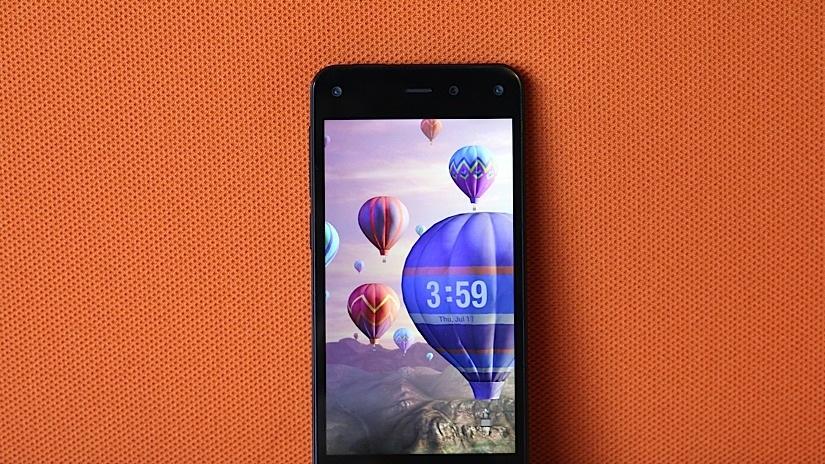
Amazon Fire phone review: a unique device, but you're better off waiting for the sequel
After producing a long line of e-book readers and tablets (not to mention a set-top box), Amazon has its sights set on the smartphone market. But finding success here won't be easy, even for an established tech giant like Amazon. With the Fire phone, the online retailer is coming in as an unproven underdog, hoping to bring iPhone and Android users into its fold. CEO Jeff Bezos says the only way to do that is to differentiate; to wow potential buyers with new features they didn't even realize they needed. These unique offerings include 3D head-tracking, product scanning and fast help from customer service agents.
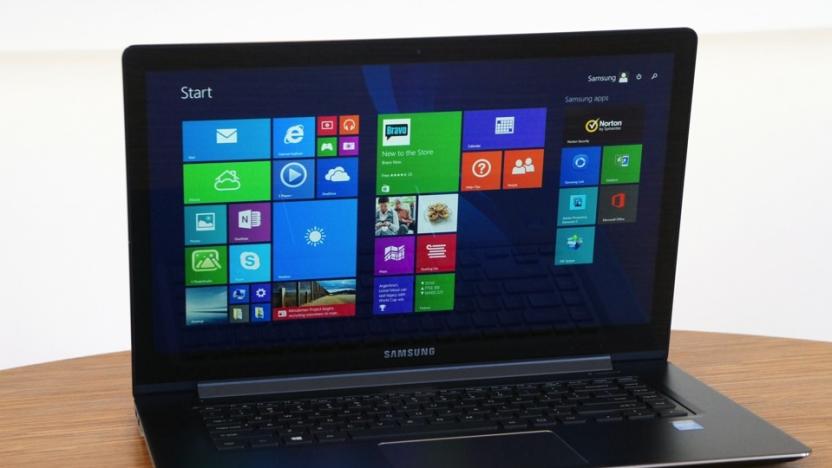
Samsung ATIV Book 9 2014 Edition review: big screen, even bigger price
So many Ultrabooks in our laptop buyer's guide: Not one with a 15-inch screen. Which is strange, because it seemed for a while that bigger-screen ultraportables were going to become a thing; HP, Sony and ASUS all tried their hand at super-light 15-inch machines. Two years later, though, Samsung is one of the only companies that's still at it. The company recently came out with the ATIV Book 9 2014 Edition, an update to the 15-inch Series 9 laptop from 2012. Like the original, it's insanely thin and light for a machine with this screen size, except now, it graduates to a full HD touchscreen, longer battery life and updated processors. Most notable of all, it features an improved audio setup with a built-in digital-to-analog converter allowing you to play back lossless, or "studio-quality" audio formats. The thing is, even for a flagship it's pretty expensive: At $1,500, it has one of the highest starting prices we've seen, and there are plenty of similarly specced machines that cost less. That raises an interesting question, then: Who should buy this?

ASUS Transformer Pad TF103C review: a speedy budget tablet with a few sacrifices
When it comes to ASUS, buying a full-size Android tablet has usually meant venturing past the $300 mark; even the Transformer Book T100 set you back $349 when it first came out, and that was considered a steal. That's no longer a problem in 2014. ASUS' new Transformer Pad TF103C costs $299 with the company's signature keyboard dock included, or as much as some smaller mid-range slates. While that's potentially a hefty bargain, it begs a few questions: Just what are you giving up to get that price? And is it worth the trade-off when you could likely snag a smaller, but more powerful tablet for less? As I've learned, you're making quite a few sacrifices in the name of a better deal. This is still quality hardware, but you have to know what you're in for.

Android Wear review: Taking smartwatches in the right direction
When I was a tiny tot, I watched Knight Rider and pretended I was Michael Knight, talking to KITT on my watch. Yet now that there are real-life watches that can do even more things, I don't find myself quite as excited as my 5-year-old self was. Smartwatches have been around for over a decade already (remember Microsoft SPOT?), but the category hasn't evolved at the same pace as smartphones. It's not because there's a shortage of digital wrist-worn timepieces. The problem is that there's no common platform for third-party apps, which means there's little potential for growth. There also doesn't seem to be any vision. Some watches act as Android phones with SIM cards and tiny touchscreens, while others try to establish their own platform to entice developers. Still others have even tried to put fitness bands and smartwatches into one device, to limited success. Even worse, most of the watches on the market today are what you might call "fashionably challenged" -- they simply aren't attractive enough to entice the masses. Google's solution is to extend its Android platform -- which has very strong market share and developer support -- to the wearables genre with Android Wear.

Samsung Galaxy Tab S review: slim design, long battery life, stunning screen
It'd be silly of me to talk about tablets in the past tense -- we still write stories about them daily and clearly, we review them, too. But of the ones we've seen lately, most have been low-end; mid-range at best. The market for high-end slates, once crowded with companies big and small, now looks more like a fraternity. At this point, the only players left are mostly big names like Apple, Microsoft, Sony. And, of course, Samsung. The outfit just announced the Galaxy Tab S, its flagship tablet for 2014. Available in 8.4- and 10.5-inch sizes, it comes armed with the best possible specs, including a stunning 2,560 x 1,600 Super AMOLED screen, 12-hour battery life and a slim build that measures just 6.6mm thick. In addition, Samsung added a fingerprint reader (still a rarity on tablets) and free goodies like popular magazines, Dropbox storage and a six-month Wall Street Journal subscription. The tablet's up for pre-order now, starting at $400 for the 8-inch model and $500 for the 10-incher. So, you can't test-drive it yet, but, as it happens, I've been playing with it for almost a week. Suffice to say, I've enjoyed myself. Mostly.

Sony SmartBand review: a fitness tracker that goes beyond fitness
When you hear the word "wearable," there's a good chance you think of a wristband, probably one that tracks your activity. Ever since Nike launched the FuelBand, your lower arm has become the main focus for fitness tech. Already the rot is setting in, though. Nike is rumored to be leaving the game completely (even if recent events suggest otherwise). Everyone else is still trying to decide what exactly a wrist-worn gadget should do. No one device appears to have figured out the magic formula. Most bands stop at counting steps and logging sleep. But Sony decided to try something different with its $100 SmartBand wearable. It still does the step-tracking thing, just along with other stuff -- like, y'know, logging your entire life. As much as it can with a motion sensor and mobile phone, anyway. So how is it? I strapped one on to find out.

ASUS Padfone X review: A phone to replace your tablet? Not quite.
I doubt ASUS knew it was carving out a place in Android history when it revealed the first Padfone back in 2011. That's not just because it starred in an amazing product unveiling, either -- the resulting Padfone line might be the last surviving example of the "phone-as-brain" movement that fell out of vogue a few years back. In all that time, though, there's one thing US fans could never do: walk into a store and actually buy one. That changes now. After three years and three Padfones, ASUS has finally brought its curious phone/tablet hybrid to the US in the form of the $200 (with contract, anyway) Padfone X. You'd think years of iterating and refining would result in the finest, kookiest model yet, and on paper that certainly seems to be the case. But what is it like to actually use? Has ASUS managed to put its best foot forward for the Padfone's American debut?

Nokia Lumia 630 review: An affordable phone you can live without
The Nokia we used to know is no longer. In late April, the handset maker was finally folded into Microsoft's Devices and Services business after more than six months of courtship. Nokia wasn't ready to be assimilated without once last hurrah, however: It announced a trio of new devices at its new owner's developer conference, Build. The Finnish company had always tried to cater to every demographic, so it was fitting that its last in-house handsets were the top-end Lumia 930 (a global version of the Icon) and the entry-level Lumia 630/635. The 630 and 635, 3G and 4G variants of the same device, are joining an already-crowded lineup of affordable Lumias. They're distinguished somewhat by launching with Windows Phone 8.1, the latest version of Microsoft's mobile OS, but in the coming months, other WP8 handsets will catch up. That's if curiosity hasn't already driven you to update manually using the developer-account loophole. The 635 is yet to be released, but for now we have the almost identical Lumia 630. Other than offering the newest software, then, is the 630 Nokia's best budget device? A worthy sendoff for the company? A save-the-best-'til-last-type deal? Spoiler's in the headline.

LG G3 review: the company's best phone yet
Bigger, higher resolution, simpler to use. That's how we described LG's latest flagship, the G3, when we finally got our hands on it last week. The headline feature is, without a doubt, that Quad HD (2,560 x 1,440) screen. I've been gazing at it intensely since the review unit landed in my hand. But, the G3's not just a one-trick pony; there's a lot going on under that "metallic skin." Good thing there's a full Engadget review here to tell you all about it.
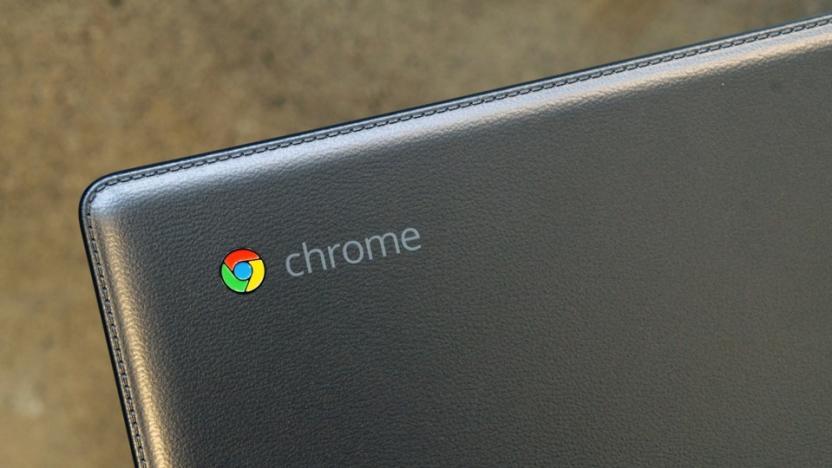
Samsung Chromebook 2 review: A $400 laptop never looked so good
Chromebooks seem to be having a moment. Which is odd, because for a while there, nobody seemed to be giving them a chance. Since the first Chromebook came out, about three years ago, Chrome OS devices have gotten flak for not being able to do as much as Windows machines. And to be fair, they couldn't, especially in the beginning. Manufacturers responded by slashing prices, but that led to a whole other problem: endless netbook comparisons. Indeed, many Chromebooks until now have been small, dirt-cheap and woefully low-end. To be avoided, mostly. Lately, though, the tides have been changing. Nearly every PC maker is making a Chromebook, if not several, and many will soon be upgrading their models with heavier-duty Intel Core i3 CPUs -- processors so powerful you might actually consider a Chromebook for your next laptop. Samsung, meanwhile, is taking a different approach: It's decked out its new 11- and 13-inch Chromebook 2 laptops with a stylish faux-leather lid, similar to what it did on the high-end Galaxy Note 3 and Galaxy Note Pro. Samsung also went with a full HD screen on the 13-inch model, making it the only notebook I know that's this cheap with this nice a display. With a starting price of $320 ($400 for the 13-incher), the Chromebook 2 is on the pricey side, but then again, you're paying for better quality. So is it worth it?
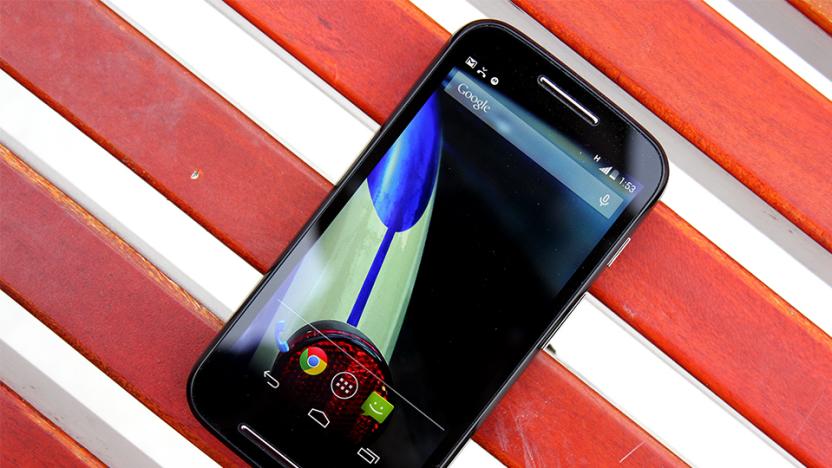
Moto E review: Where very good meets very cheap
After Motorola released the well-received Moto X into the world last year, most of us had just one question: What's Google's expensive mobile division doing next? Then-chief Dennis Woodside was surprisingly forthcoming for a tech CEO -- he said Motorola wanted to reinvent the experience of using a low-cost smartphone. When the Moto G appeared later that year, I thought the company had done what it set out to do. Oh, how wrong I was. Motorola still hasn't given up on its dream of putting smartphones within reach of anyone who wants one, and the latest weapon in the company's arsenal is its cheapest yet. The Moto E costs a scant $129 here in the States, and Motorola seems confident that its low-cost formula will do some real good for the people of the world (not to mention the company's bottom line). Now we're left with another set of questions: Does the Moto E live up to Motorola's lofty goals? Can it stand out against a clamoring crowd of competitors? Are you actually getting what you pay for? Read on for our take.

HTC One mini 2 review: A worthy new addition to the premium One clan
HTC created what was undoubtedly one of the best smartphones of last year with the original One. That was later followed up by the One mini, which was surprising in the sense that the handset maker hadn't before attempted a slimmed-down, scaled-back version of any of its flagship devices. HTC's nemesis Samsung established this trend when it launched the Galaxy S III mini, and it inspired many discussions about the ethics of slapping the name of top-tier handsets onto lesser devices. (Sony obviously made an executive decision to avoid the "mini" epithet for its Xperia Z1 Compact, which is actually just a smaller, but equally specced version of the flagship Z1.)

Surface Pro 3 review: Has Microsoft finally made a tablet to replace your laptop?
It didn't last long, but there was a moment earlier this week when I was sure Microsoft would unveil its own laptop. At a press event, Surface chief Panos Panay took the stage to remind the reporters in attendance how they once said tablets would make laptops obsolete. A quick scan around the room revealed rows of journalists, all typing on Ultrabooks -- including the MacBook Air, no less. For a moment, it seemed like Panay was conceding defeat. Indeed, Microsoft has had multiple chances to prove it can bridge the divide between slates and laptops: Both the first- and second-gen Surface tablets were intended as do-it-all devices. And both times, the company fell short of its mission. The Surface Pro in particular was powerful enough to rival Ultrabooks, but suffered from several usability flaws: It was awkward to use in the lap, and also unwieldy as a tablet. For most people, a touchscreen laptop was still the better choice. Even so, that wasn't Panay conceding defeat up there on stage -- that was him being persistent. When he finally did get to the point, he unveiled not a laptop, but a tablet, the Surface Pro 3. Most notably, this third-gen device steps up to a larger, 12-inch screen, bringing it in line with contemporary Ultrabooks. The keyboard has been born again too, this time with a larger, more responsive touchpad and the ability to prop it up at a more comfortable angle. As a tablet, meanwhile, the Surface Pro 3 is thinner and lighter than the Surface Pro 2, despite having a bigger display. Just as important, the device will start at $799 when it goes on sale next month -- that's a hundred dollars less than last year's model. All told, the Surface Pro 3 is Microsoft's biggest, fastest, thinnest, lightest, best tablet yet. Panay even went so far as to say, "Today we take the conflict away." Did they, though?

OnePlus One review: a $300 smartphone has never looked so good
Look at your phone. If you can honestly admit that you love every single thing about it, I have good news: You can stop reading this review, since it won't have an impact on your happiness. But if there's even one thing you wish your smartphone could do better, it means you had to make compromises when you bought it. Everybody wants a perfect phone, but such a thing simply doesn't exist. So, we settle on a phone that has only 95 percent of the features we want, and that... kinda sucks. OnePlus believes it doesn't have to be this way. Its motto, "Never Settle," represents the fledgling Chinese company's mission to build and sell the perfect smartphone. Its first attempt is the One, a premium-looking device that has customizable firmware and top-shelf specs. Oh, and it'll sell for $299 unlocked and free of contract, which is even less expensive than Google's Nexus 5. Seems a little over-ambitious for a small startup with no official track record, doesn't it? Let's find out if the One is too good to be true.

Lenovo ThinkPad 8 review: sharp screen, worst-in-class battery life
Not long ago, I vowed to review every 8-inch Windows tablet. That's partly because they're popular, sure, but there was another reason, too: Their specs are so similar that you'd have to actually use one to know which is best. In a field full of same-y options, though, the Lenovo ThinkPad 8 would seem to stand out: It's the only one with a full HD screen, not to mention a 128GB storage option (good news for folks who'd rather not store stuff on a microSD card). Other bonus points include an aluminum casing -- a step above other tablet designs -- as well as optional 4G. Of course, premium doesn't come cheap; the ThinkPad 8 starts at $429, whereas competing models can be had for around $300. The question, then, is: Could it still be worth it?

Nokia X review: What happens when Nokia makes an Android phone?
For a company now under Microsoft's rule, Nokia has serious grit. The phone maker announced an Android phone called the X just two months before completing its merger with Microsoft. Even more intriguing is the fact that this is no run-of-the-mill Android device: The X comes with a Windows Phone-like launcher, offers Microsoft services and will be sold for around $120 in developing markets. While it may not be a powerful smartphone, it has many unique qualities that help it stand out from the low-end crowd. What's it like, and should Microsoft invest in its success?

Sony Xperia Z2 Tablet review: A top-tier slate with a familiar face
Oh, Sony. Its earliest Android tablet efforts were a little odd (and that's putting it politely), but the company eventually managed to get its act together. Last year's Xperia Tablet Z? Easily the finest Android slate that Sony's ever made. When it came time to craft an upgrade, though, Sony was faced with a choice: Should it try to push the envelope in a different direction? Or simply stay the course and apply a healthy dose of polish to an already-good device? Needless to say, it chose the latter. The new Xperia Z2 Tablet looks strikingly similar to its predecessor, albeit with a swapped-out set of components under the hood. The strange sense of drama that comes with a new product seems absent here. In a cynical age when new devices can fly or flop based on spectacle alone, Sony played it safe. It iterated. But is that such a bad thing? Is "iterating" really as yucky a word as we've all been led to believe? Let's find out.

Sony Xperia Z2 review: a big, powerful slab of a phone
It's been nearly three years since I reviewed the Xperia Neo, manufactured by what was then Sony Ericsson. The Neo represented just the second generation of Xperia phones running on Android, from a period when Sony was finding its feet in the world of mobile and still chucking out plenty of duds (I'm looking at you, Tablet P). Fast-forward to today and things have changed dramatically under Kaz Hirai's stewardship. I'll tell you this right now: The Z2 is an easy phone to recommend, at least for those living in countries where it'll definitely be available (a list that includes the UK and Canada, but not yet the US). The only real caveat is the handset's huge, monolithic construction (a far cry from puny, 126-gram Neo). As you'll see, if you can get past its size, the Z2 addresses some of the most serious gripes we had with its predecessors, the Xperia Z and Z1, particularly with respect to its LCD display. In fact, in some respects, it's far ahead of any other Android phone currently on the market.
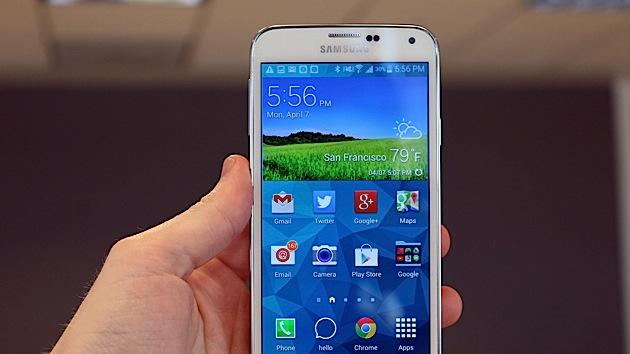
Samsung Galaxy S5 review: a solid improvement, but don't rush to upgrade
Now that I've been testing it for a few days, let's see if the Galaxy S5 lives up to all those promises.

Amazon Fire TV review: the set-top that tries to do everything
Here's the thing about Amazon: We can't figure the company out half the time. Few things embody that quite as well as the Fire TV. The company is adamant that the set-top box is not a gaming console, but it's invested heavily in original game development for it and even produced a shockingly good gamepad accessory. Still, video games are just a "bonus." One of the pillars of the streaming-media box is supposed to be openness, but there's no denying that other services like Netflix are treated like second-class citizens here. They're invited to the party; they just better not outshine the host. The Fire TV may be the next step for Amazon as it tries to build its own ecosystem, but it's also yet another entry in the crowded streaming-media market. And the big question is: Do we need another? We've got TV set-tops for cable, satellite and fiber (at one time joined by a disc player for movies and maybe a game system or two). The next-gen game consoles do double duty as entertainment hubs, and there's no shortage of cheap boxes designed specifically to stream Netflix, HBO Go and Pandora. Add in smart TVs and the rise of pint-sized dongles, and the question of what to watch becomes how to watch. The Fire TV is trying to muscle out competitors with its $99 price and a strong focus on performance, search and openness. Now that we've spent a few days living with one, we can judge whether it's just another option among many, or truly a standout that finally fixes problems the others have so far ignored.






